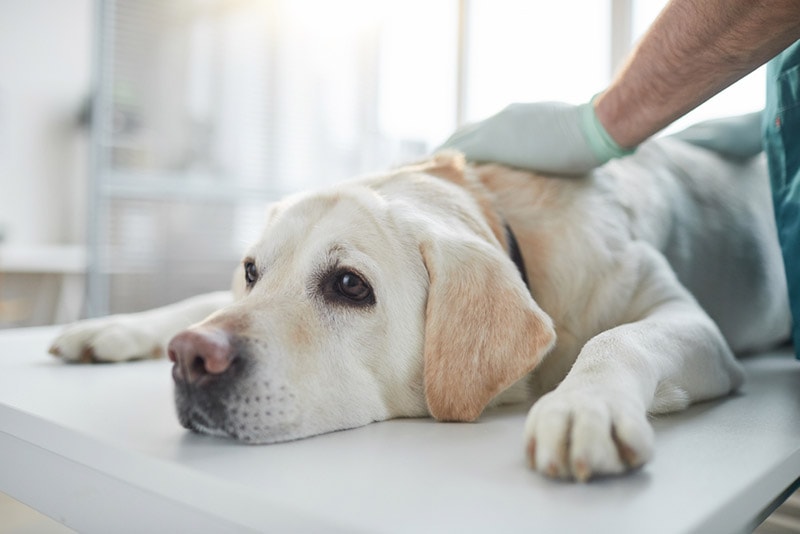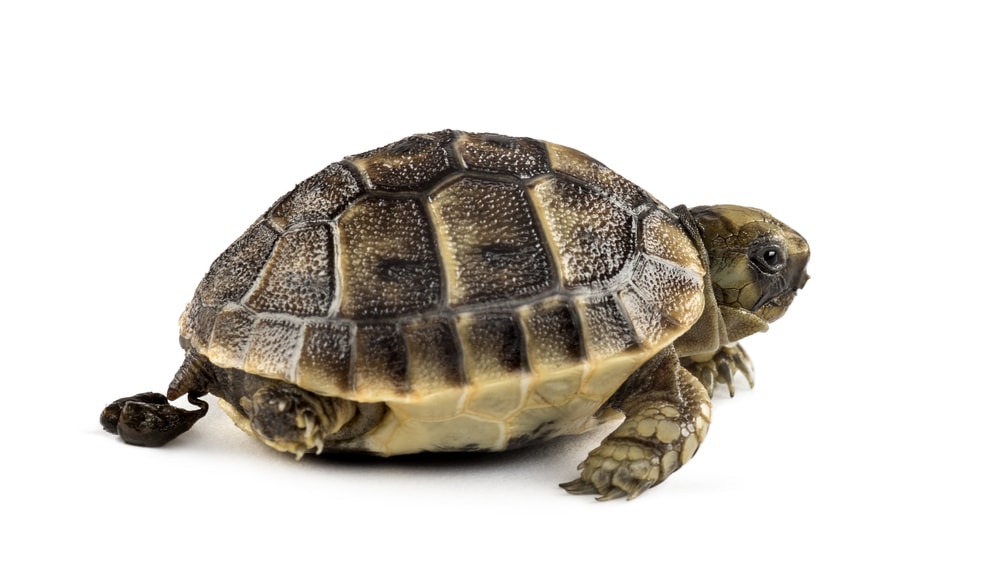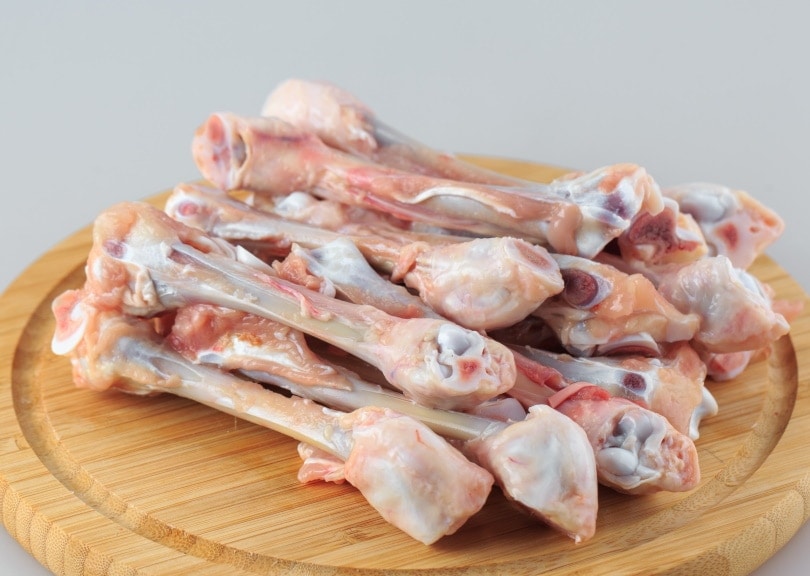Can Dogs Eat Chocolate? Toxicity Signs & What to Do (Vet Answer)

Updated on

Click to Skip Ahead
Dogs cannot eat chocolate because it is toxic to them. Chocolate is made from cocoa, which contains a substance toxic to dogs called theobromine. The toxicity of this alkaloid in dogs is directly proportional to the percentage of cocoa in the chocolate and the amount that the dog ingested. For example, dark chocolate, which contains 70–85% cocoa, is more toxic than the milk variety. Chocolate also contains caffeine, which is another toxin for dogs.
If your dog has consumed chocolate or products that contain cocoa, contact your veterinarian immediately. In addition, do not try to induce vomiting unless your vet recommends it.
Read on to learn more about why dogs shouldn’t eat chocolate.
Why Is Chocolate Toxic to Dogs?
Chocolate contains theobromine and a low concentration of caffeine. Theobromine is an alkaloid that stimulates the central nervous system and cardiovascular system and is found in cocoa beans, coffee, and tea leaves. Unlike humans, pets metabolize this compound slowly, enabling it to accumulate in their bodies. Dogs will feel the side effects more severely.
However, not all varieties of chocolate are equally toxic.
- Unsweetened baking chocolate (the most toxic chocolate for dogs)
- Semi-sweet chocolate
- Dark chocolate
- Milk chocolate (the least toxic, as it has a much lower percentage of cocoa)
While all varieties of chocolate are toxic for dogs, it is recommended to know the type of chocolate that your dog consumed when you take them to the vet.

How Much Chocolate Can Hurt My Dog?
In general, the clinical signs of chocolate poisoning in dogs occur when they consume 20 mg of theobromine per kilogram of body weight. Severe clinical signs of cardiac toxicity occur when dogs consume 40–50 mg/kg of theobromine, and convulsions occur at doses of 60 mg/kg or higher.
Depending on the type of chocolate consumed, your dog might need immediate veterinary care. For example, 1 ounce of baker’s unsweetened chocolate ingested by a 30-pound (13.6-kg) canine warrants prompt emergency treatment. However, 1 ounce of milk chocolate for the same dog isn’t considered an immediate medical emergency.
This calculator can help you determine the toxicity of various chocolates for your dog.
What Are the Clinical Signs of Chocolate Poisoning in Dogs?
The clinical signs will depend on the size of your dog, how much chocolate they ate, and the type of chocolate that they consumed. You may only notice gastrointestinal signs, such as diarrhea or vomiting. That said, elderly dogs and those with heart conditions are more at risk of sudden death from chocolate/theobromine poisoning.
If you are unsure whether your dog has eaten chocolate, the first signs are hyperactivity and restlessness. Clinical signs of chocolate poisoning usually occur 6–12 hours after ingestion.
In some cases, the clinical signs can last up to 72 hours and include the following:
- Vomiting
- Diarrhea
- Increased urination
- Tremors
- Muscle rigidity
- Restlessness
- Increased or abnormal heart rate
- Low blood pressure
- Seizures
- Collapse
- Death

My Dog Has Eaten Chocolate! What Should I Do?
If you saw your dog eat chocolate or another product with cocoa, contact the veterinarian—the sooner your dog is treated, the higher the chances for their full recovery. Keep or take a picture of the packaging because the treatment will depend on the type of chocolate ingested, the amount ingested, and how long it has been since your dog ate it.
In some cases, the veterinarian may recommend inducing vomiting at home, or they may induce it at the clinic; it depends on how fast you can get your dog there. Do not try to induce vomiting at home unless the vet explicitly tells you so because you risk doing more harm than good. It is also possible that they will recommend giving activated charcoal to your dog to prevent the absorption of chocolate in their body if a few hours have passed since ingestion.
If your dog shows signs of chocolate poisoning, contact the veterinarian immediately because hospitalization and treatment are needed. Treatment will consist of intravenous fluid therapy, anti-nausea or anti-diarrhea medications, and possibly anti-seizure medications.
How to Prevent Your Dog From Eating Chocolate
Prevention is better than cure and can save your dog’s life.
If you want to avoid taking your dog to the vet because they ate chocolate, here’s what you can do:
- Keep any items that contain cocoa, including chocolate, out of your dog’s reach, such as on a high shelf or behind closed doors. If you have children or guests, ask them not to give chocolate to your dog.
- Train your dog. This is the safest way to make sure they don’t eat anything harmful while you’re not watching them.
- Teach your dog the “leave it” command. This extremely effective command can prevent dogs from eating something that they shouldn’t.
Conclusion
Chocolate is toxic to dogs due to the cocoa it contains. In fact, all products with cocoa are toxic. It contains theobromine and a low concentration of caffeine, both of which are toxic to dogs. Chocolate consumption can affect the nervous, circulatory, and digestive systems. If you suspect that your dog has consumed chocolate, do not wait for them to develop the corresponding clinical signs. Take them to the vet immediately. Chocolate poisoning can be fatal in certain circumstances if it is left untreated. Old dogs or those with heart problems have an increased risk of dying if they consume chocolate.
Related Read:
Featured Image Credit: Security, Pixabay











